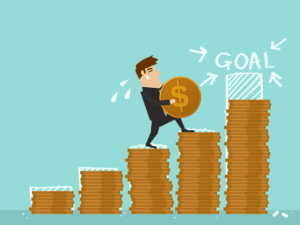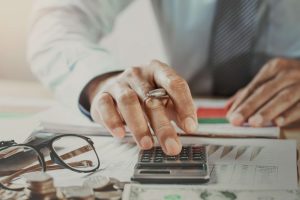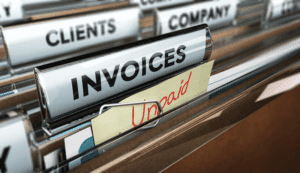
Establish a balanced combination of servant, situational and adaptive leadership to build your decision frameworks. For example, stay involved in the training process upfront for the team to activate around customer acquisition and sales, instead of taking a permanently directive “ivory tower” approach. Once they understand the structure and how you think, each member of the team can take their role and run with it. That way, you understand the intricacies of their day-to-day overall operations and understand every decision the team makes over the long term. This helps to bring everyone together and communicate clearly. The complexity of modern life, with its vast array of Certified Public Accountant choices and potential outcomes, requires robust strategies for making informed decisions.
- The Decision Tree technique was first described in the 1960s as a regression tool to track back the triggering events that led to a failure.
- Consequently, different perspectives lead to spotting more opportunities, planning better for risks, unbiased decisions, and successfully dealing with challenges.
- Developed by psychologists Daniel Kahneman and Amos Tversky, the Prospect Theory proposes that individuals’ decisions are influenced by how potential outcomes are framed.
- As we learn and talk to others, we may need to revisit different “steps” of the DMF.
- Gil Shklarski’s tool focuses on reversible decisions and the fact that almost all decisions can be reversible.
When stakeholders won’t align
- Clear roles also enable everyone to focus on their specific responsibilities, which streamlines efforts and helps achieve organizational goals more efficiently and effectively.
- Humans often find it challenging to make decisions, especially when interpreting data and statistics.
- Use the right one, skip the stress, and crush decisions like a boss.
- Poor decision-making can lead to missed opportunities, wasted resources, and a decline in team morale.
- The method is merely meant to help identify most of the important ethical considerations.
Examples of goods common to all include affordable health care, effective public safety, peace among nations, a just legal system, and an unpolluted environment. Schedule regular daily, weekly or monthly check-ins with the team, formally and informally. This helps you keep abreast of any issues they might face and offer guidance when needed. Consider quarterly strategy meetings to evaluate the progress in relation to the KPIs and highlight any areas of improvement.
How to Implement Pareto Analysis for Remote Teams

Frameworks play a pivotal role in guiding leaders through complex scenarios. A solid decision-making framework incorporates the need for stakeholder value creation and aligns with organizational goals, as highlighted in the managerial decision-making literature. Data product managers and analysts transform data into actionable insights, minimizing risks and maximizing opportunities for positive outcomes. A decision-making framework analyzes the cause and effect relationship and helps a person make the best possible decision in the scenario. What every decision-making framework does is to facilitate the choice of an idea that has the least harmful consequences.
TDODAR Decision Model
Do existing employees execute their responsibilities in a way that upholds them? You should bake your operating principles into both your hiring and performance review processes to make them useful and keep them top of mind. As COO of Stripe, Claire Hughes Johnson has developed a decision-making framework that has become a sort of shared decision-making compass for all members of the team, new and old. According to Johnson, you need to document concrete core tenets describing the way you work. The only framework for decision making you need is the one that makes you actually decide. Not “I’m thinking about it.” Give them the exact date and time you’ll decide.
- As with anything else, it’s worth thinking about the potential impacts to determine just how much deliberation and precision a decision actually requires.
- In most cases, the performer is also assigned the input role to gather insights.
- Using the framework, we get a list of tradeoffs and can make a decision knowing what things we can or can’t compromise.
- Correctly identifying the problem is essential to effective decision making.
- Sometimes through the conversation you end up adding a Column C or D because new options or ideas emerge with different or fewer risks.
Create a file for external citation management software
Complicated contexts, unlike simple ones, may contain multiple right answers, and though there is a clear relationship between cause and effect, not everyone can see it. RAPID makes the decision-making process collaborative, transparent, and streamlined. Furthermore, every key stakeholder shares their expertise, and a decision is made after considering various perspectives. With tools like ProofHub, you can collaboratively make decisions, convert them into tasks, track the progress from one central point, and make successful decisions. RAPID and RACI work well together by covering both decision-making and execution. Together, they help organizations manage everything smoothly, from planning to completing framework for decision making tasks.

It will let the employees know what the values the company stands for are, what are the steps to be followed in case of a daily or recurring scenario where a decision needs to be made, etc. These are the guidelines that you can follow to base your decision-making framework. If you are setting up a company, having a decision-making framework will lighten the burden of decision-making on the top management. In case of the decision being a work issue, the financial aspect of your decision might also come into question.


And third, we choose the action that will produce the greatest benefits and the least harm. The ethical action is the one that provides the greatest good for the greatest number. The six ethical lenses briefly introduced in the Framework are very concise, broad-stroke descriptions of several ethical perspectives. Looking at a potential decision landscape through each of them in turn, a Framework user will see different ethical aspects highlighted. The lenses are therefore complementary in that they help Framework users see more of the ethical nuances of a situation. However, the lenses might also reveal ethical aspects that come into conflict with each other; when this happens, the balancing of those ethical considerations is up https://baddi3amal.de/bookkeeping/multi-step-income-statement-an-in-depth-financial/ to the user.
How Can These Frameworks Be Effectively Used?
For distributed teams, conducting a SWOT analysis can be a powerful collaborative exercise. To use the Impact vs Effort Matrix, list all the tasks or projects under consideration. Evaluate and score each task based on its potential impact and the effort required. Plot these tasks on a two-dimensional grid with “Impact” on the vertical axis and “Effort” on the horizontal axis.
Now, it seems that the car is the best option because the Traveler won’t need to rent a car in LA. However, we wanted to make this example look like a real-life situation and imagined that the Traveler’s friend already has a car. To see what aspects are the most critical, we prioritized them using the MoSCoW method. The main Goal of the Subject is to spend a weekend in LA with a friend (shown in blue). As for the Benefits (light green), we listed affordability, schedule flexibility, comfort, flexible navigation in LA, and minimal travel time. We also mentioned that it’s hard to navigate in LA without a car as a Risk (yellow) and that driving that far is tiring – Domain knowledge (purple).



